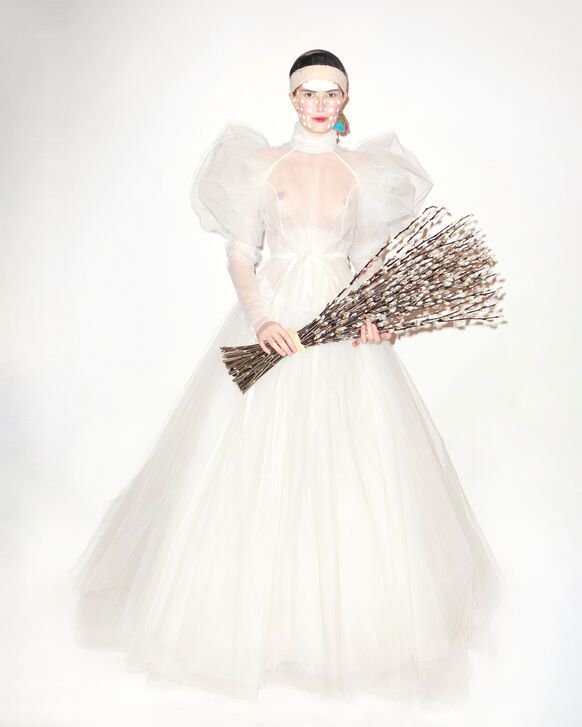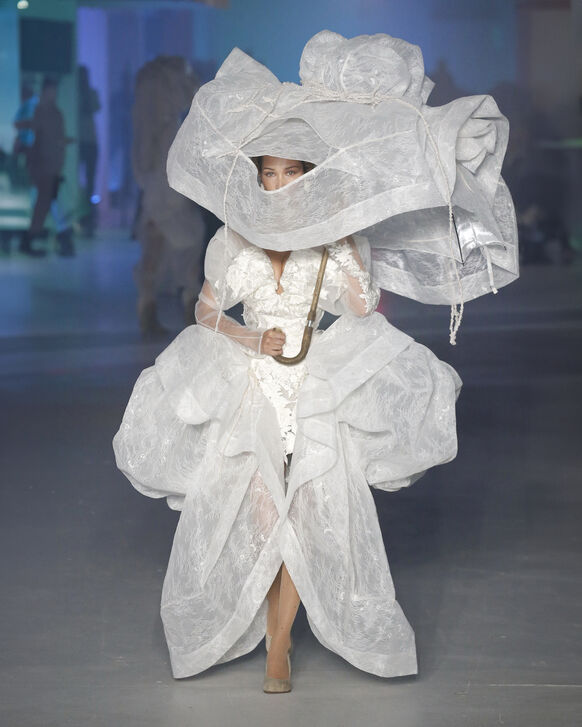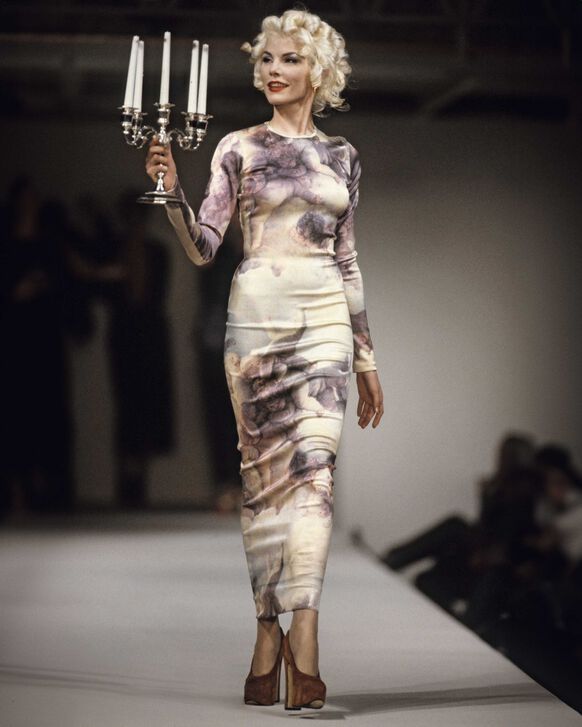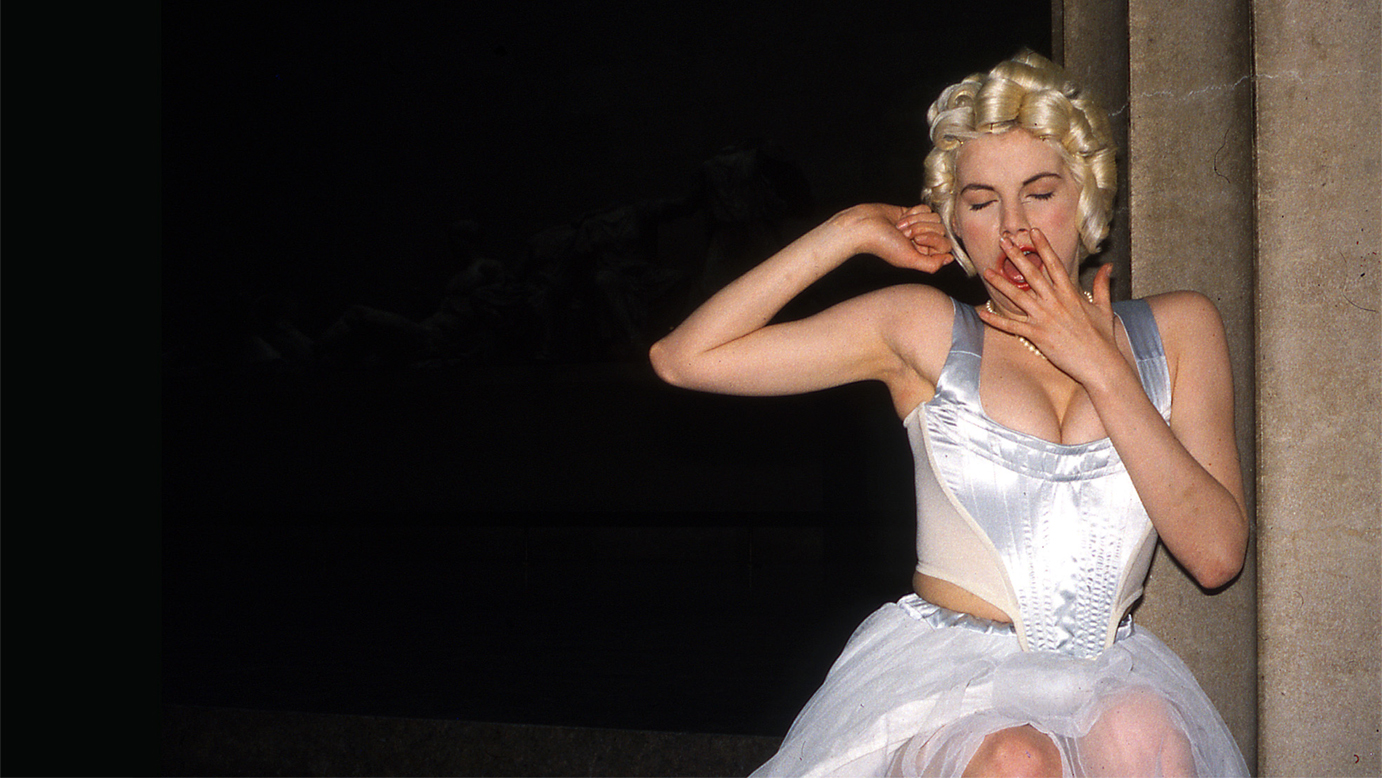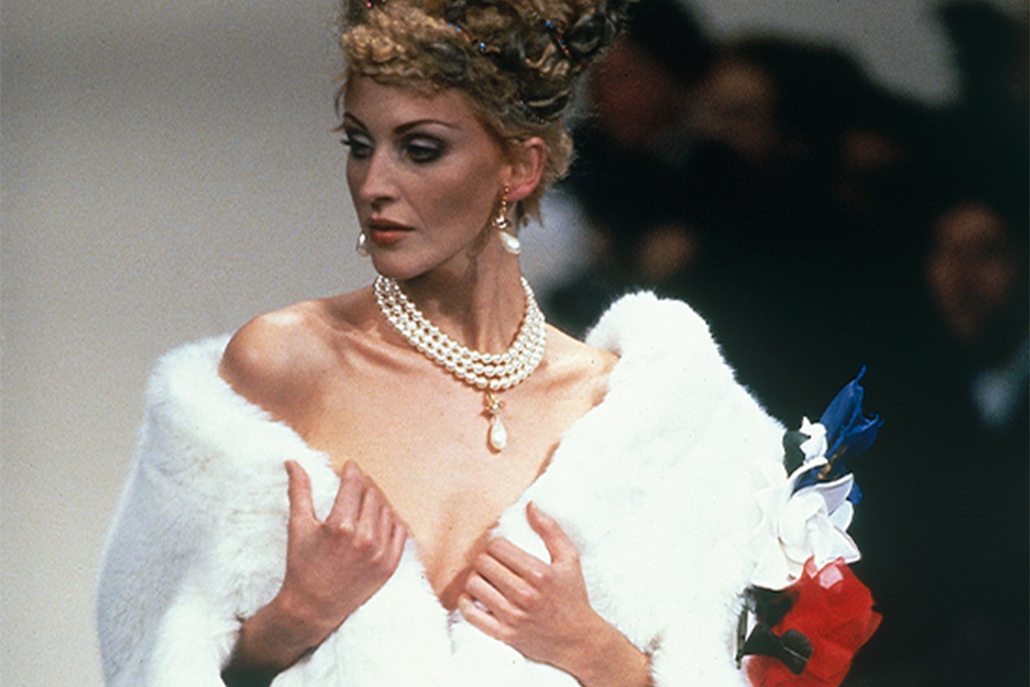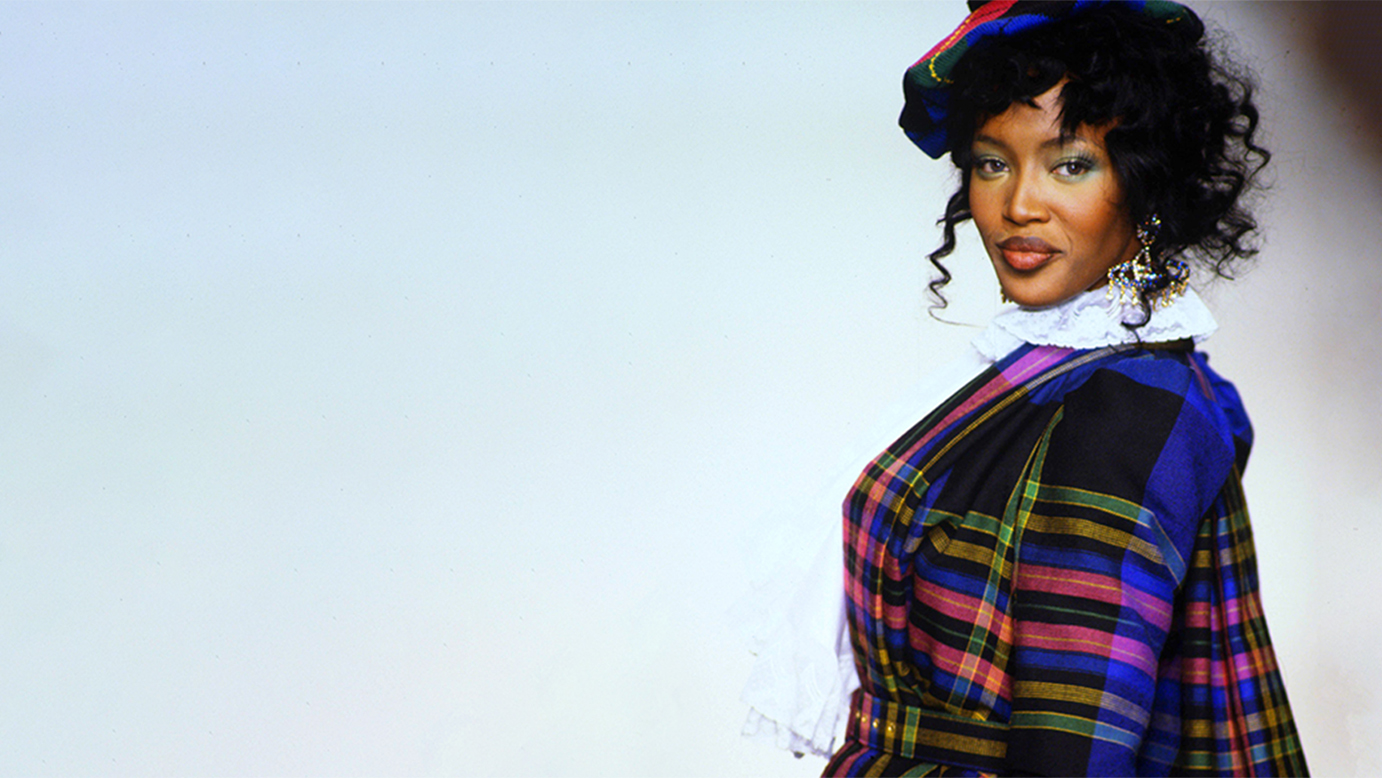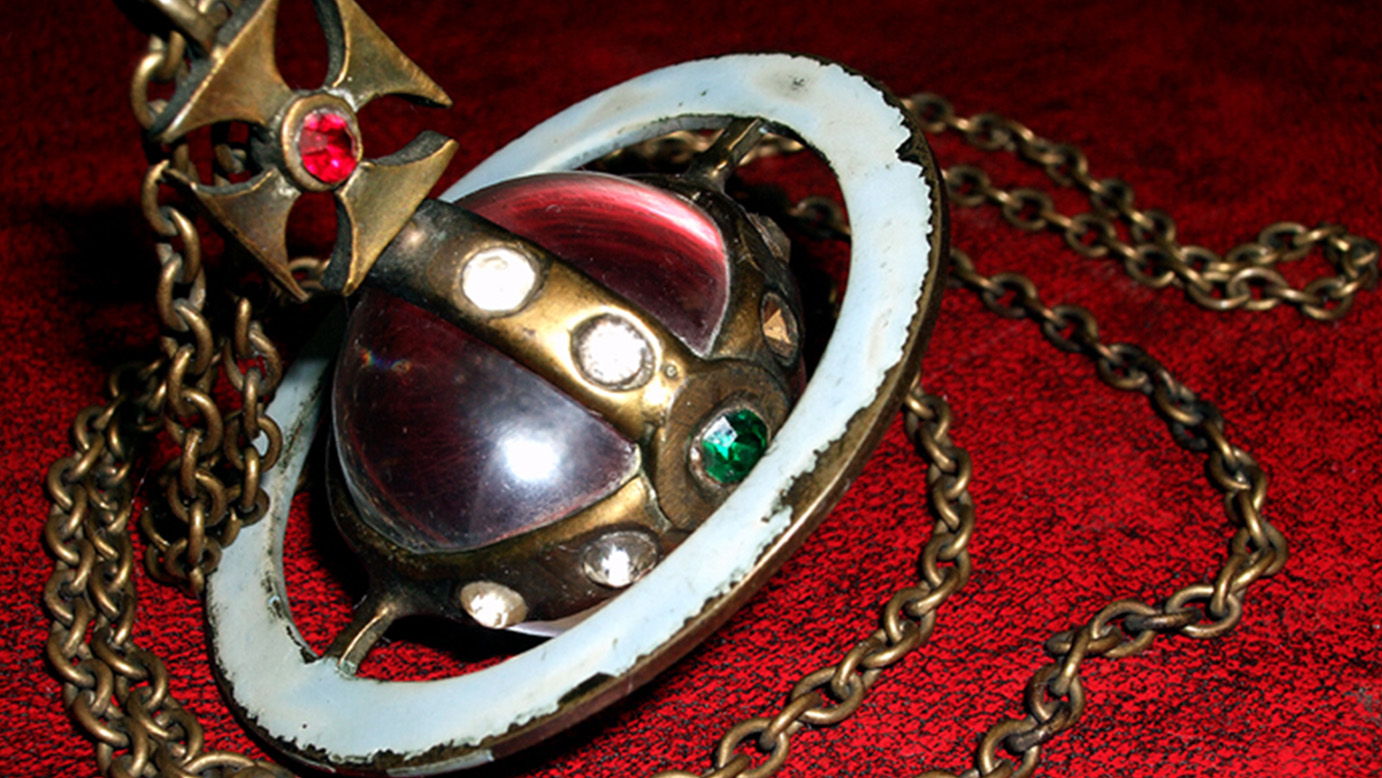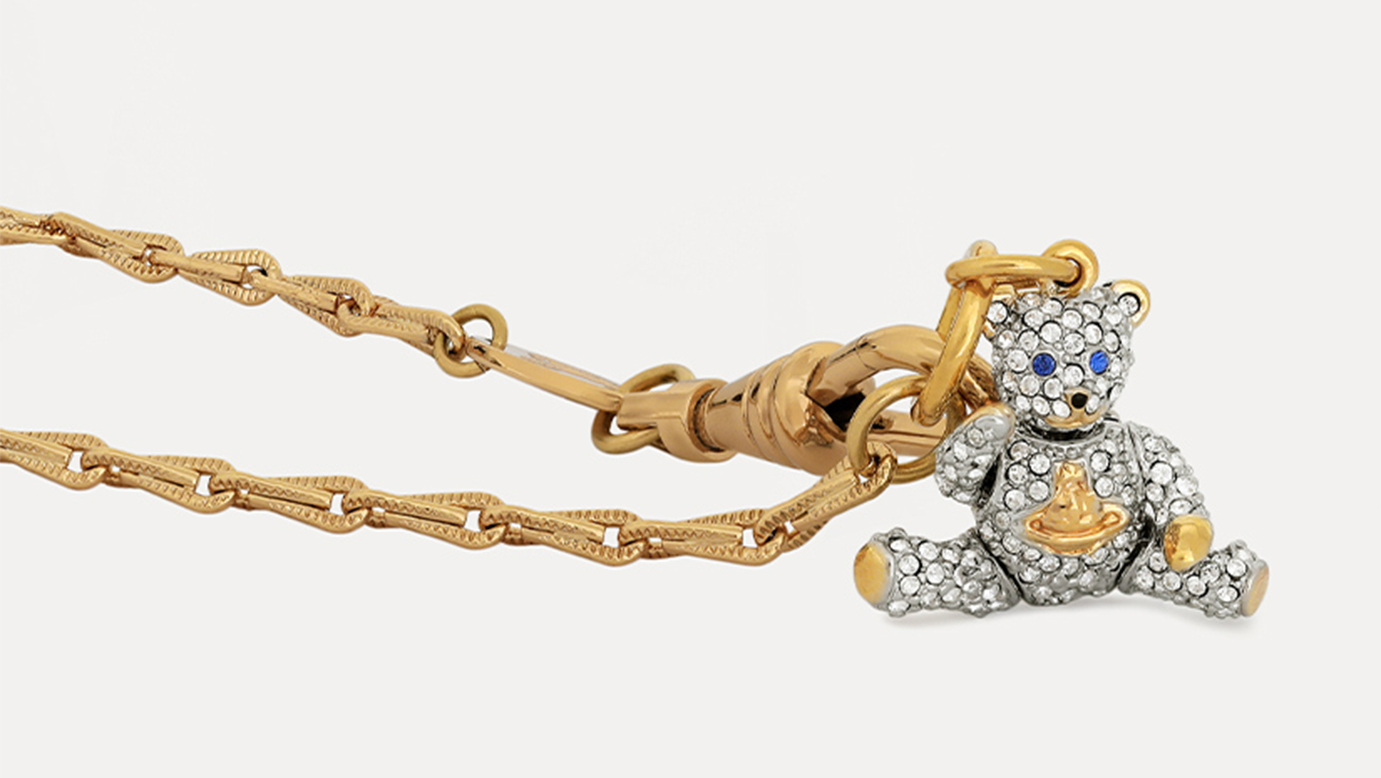
Heritage
Westwood Heritage: A History of Bridal in our Collections
21/11/2023 — Vivienne Westwood
Art has been integral to defining Vivienne’s visual language. ‘I rely on historical reference,’ she once expressed, often seeking to ‘live up’ to the work of past masters. ‘By engaging with human genius, I have tried to capture the past in my fashion’. Her bridal gowns were of no exception. With evident nods to the masters of art history, she reimagined forms, images and materials - creating an iconography of her own.
Vivienne used the body as a vehicle for the imaginary. In her Spring-Summer 1991 ‘Cut, Slash & Pull’ collection, Sara Stockbridge closed the show as an unconventional bride, carrying her newborn son. She appeared wrapped in a dress printed with Jean-Honoré Fragonard’s 1797 painting, ‘The Swarm of Cupids’. As the name suggests, the painting displays a group of cherubic figures, gracefully suspended in the clouds. Vivienne offered a sense of grandeur through a voluminous silhouette. The fabric followed the soft hues and subtle shading of the original artwork, creating an atmosphere reminiscent of heaven.
The print also features within the following ‘Dressing Up’ collection of Autumn-Winter 1991. As articulated by fashion journalist Alexander Fury, such pieces ‘amplify Vivienne’s ambition to relate to the concept of the classical - from the Renaissance to the 19th century, from Victorianism to early modernism.’ The Autumn-Winter 2014/15 ‘Save the Rainforest’ collection further echoed this notion, with a bridal gown recalling Franz Xavier Winterhalter’s 1865 portrait of Empress Elisabeth of Austria. The original piece was a white satin evening dress, covered with thousands of silver foil stars, shimmering under a layer of tulle. With this gown, Vivienne and Andreas offered a contemporary play on the full crinoline ballgown, with a full-skirted bridal piece, adorned with exaggerated layers of filmy tulle.
The Autumn-Winter 1997/98 collection 'Five Centuries Ago' further recalled the art world, through garments inspired by court costumes of Renaissance England, specifically in the age of Gloriana. Inspired in part by Dynasties, an exhibition of Tudor and Jacobean portraits at London's Tate in early 1996, the collection's closing bridal look - a farthingale-skirted gown, worn by Alek Wek - included a pattern of fantastical land and sea beasts on silk, executed by the Zurich silk specialist Fabric Frontline. Emulating the bodices seen in Tudor portraits, accompanied by a traditional standing collar, the gown replicated a design worn by Elizabeth I, in a late 16th-century portrait on display in Hardwick Hall, Derbyshire, close to where Vivienne grew up.
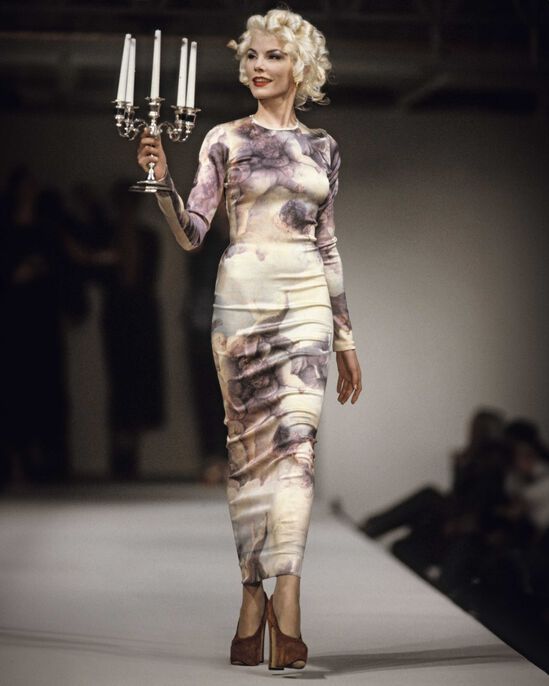
Together with her husband and creative partner Andreas, Vivienne continued to translate history into couture. The Spring-Summer 2020 Andreas Kronthaler for Vivienne Westwood collection further manifests this, aptly named ‘Rock Me Amadeus’. ‘Everything’s connected,’ wrote Andreas in his show notes. ‘Things that have no connection suddenly connect. This is inspiration, intuition, the human condition.’ For the Paris show, Bella Hadid appeared on the runway as an ethereal bride, adorned with twirling fabric over a corset bodice. Comparing the model to Botticelli’s Venus, Andreas recalls how she appeared ‘like she’s in the sky,’ with a form ‘blown up forever, in endless possibility’.
Venus is a central figure throughout art history. In all her forms (counting prehistoric figurines and renaissance paintings alike) she has served as a display of female beauty, love, rebirth and fertility. Such themes further coincide with our recent bridal proposals, namely the Lace Venus gown, from the Vivienne Westwood 2022 Bridal collection. Adorned with intricate three-dimensional floral lace detailing, this contemporary corseted mini gown is cut asymmetrically and offered in a romantic ivory satin.
Elements of art history are further evoked through our current 2023 bridal collection, notably through design inspirations drawn from ancient Greek sculpture. The Galaxy gown features a cinched waist and draped neckline, finished with a draped skirt, reminiscent of drapery seen on Greek statues. The defined drapery of the Moonlight corseted column gown also references these ancient artworks designed with a pale gold, lamé crepe silk fabric. As ever, such gowns appear to walk simultaneously in the past, as in the present – a quality and signature of the house.
